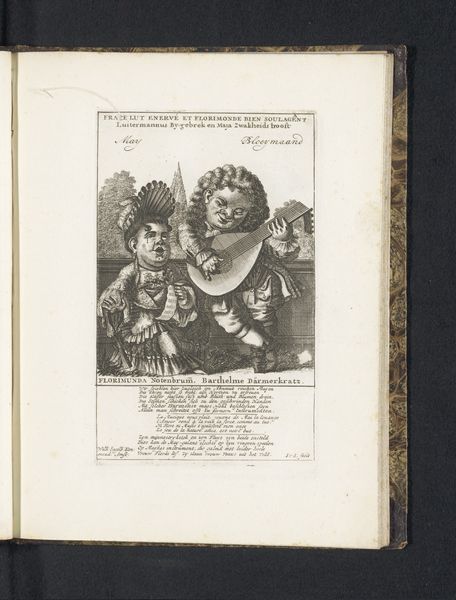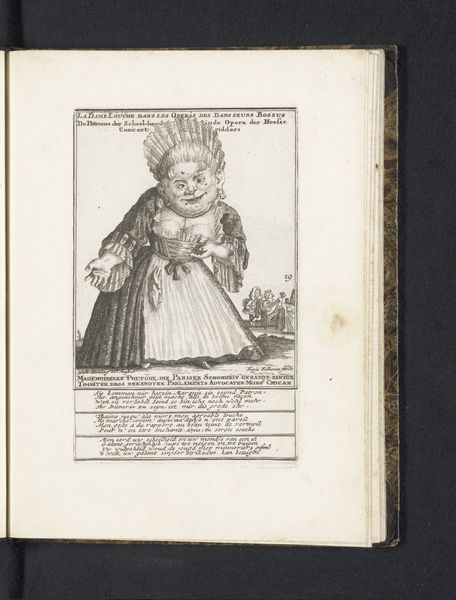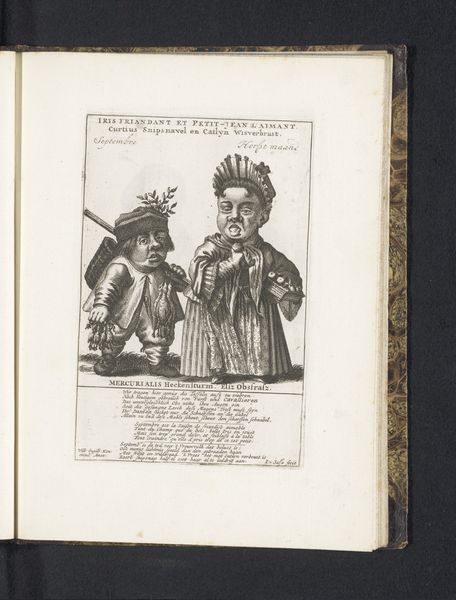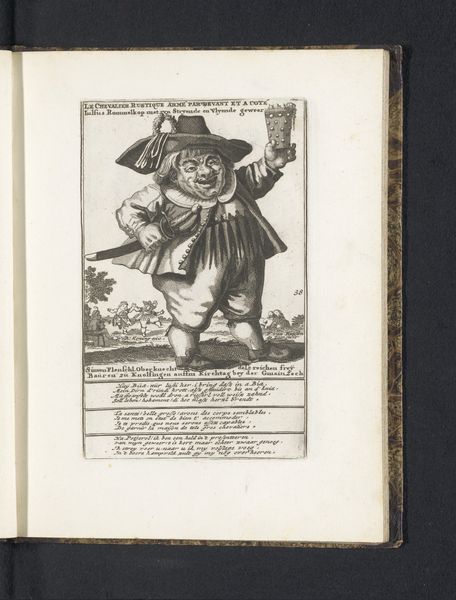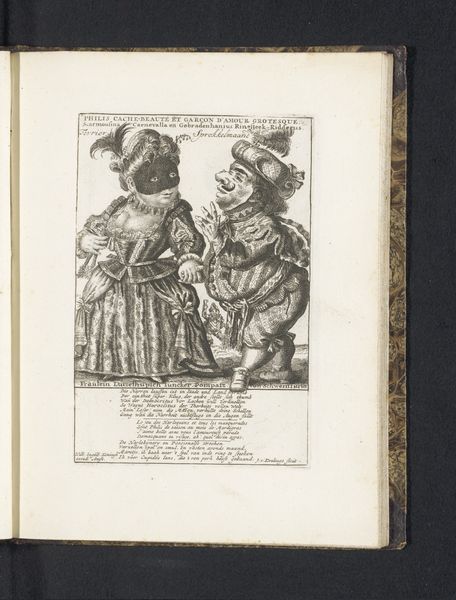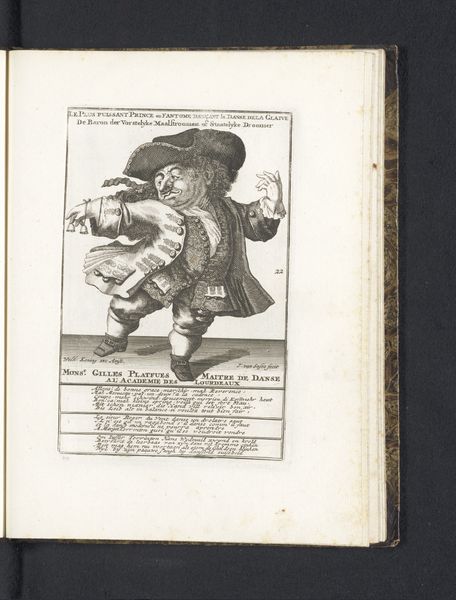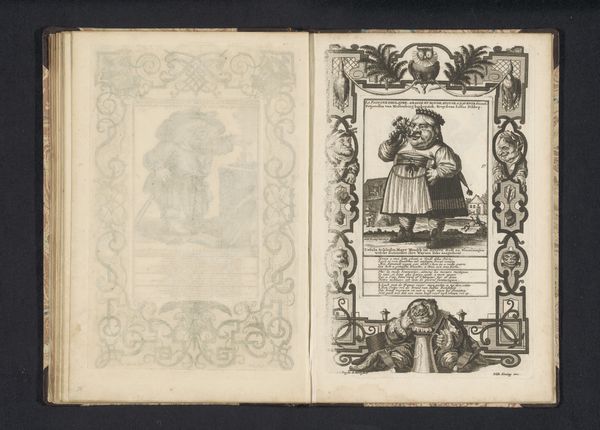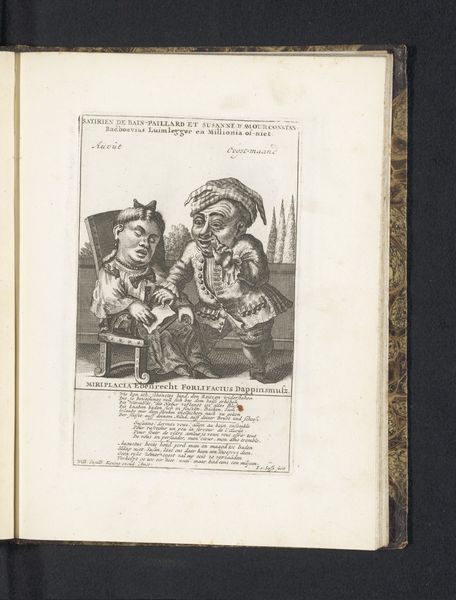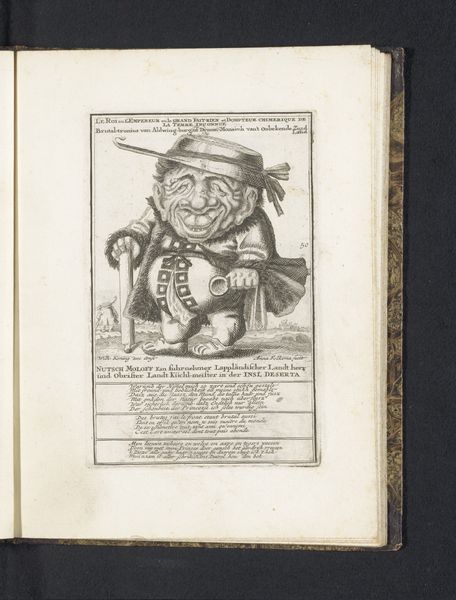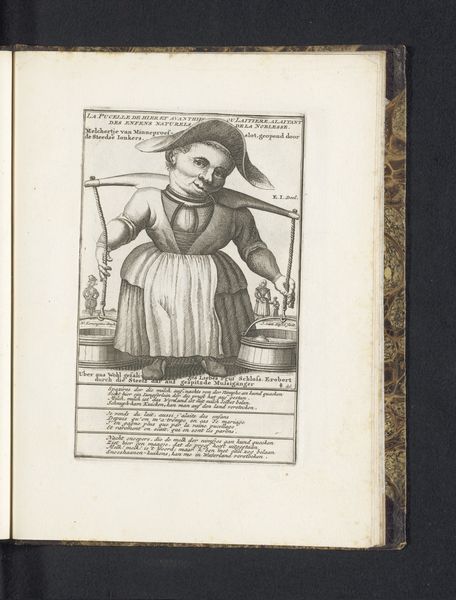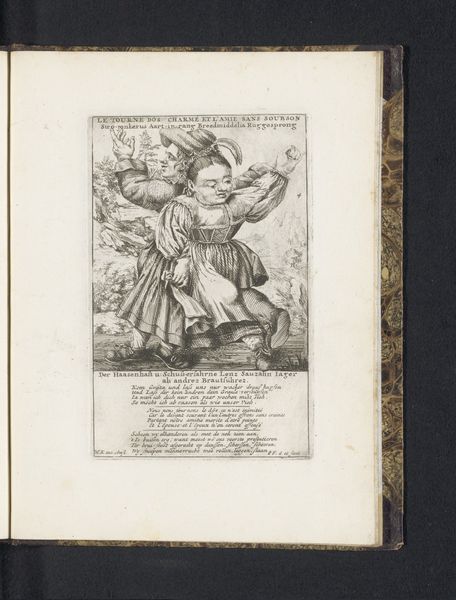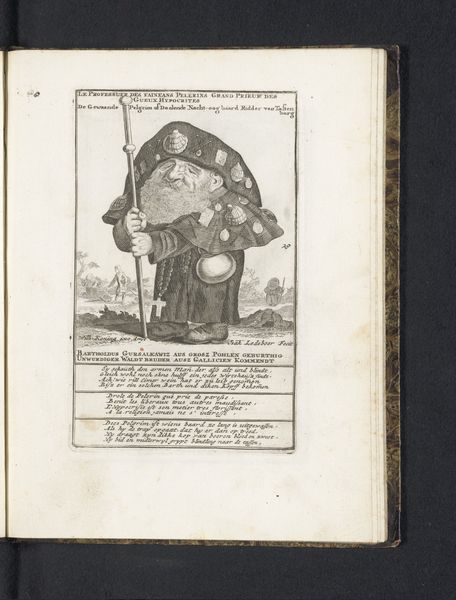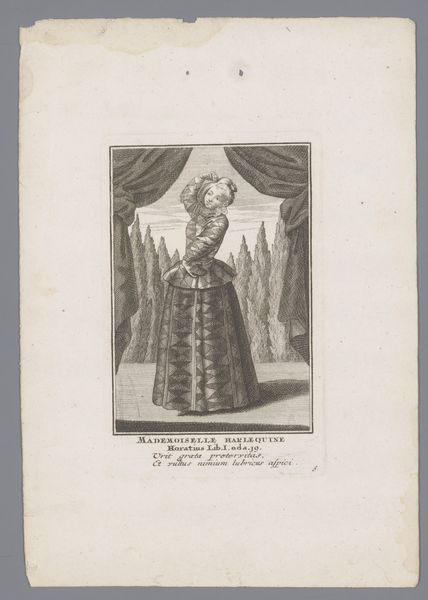
print, engraving
#
baroque
# print
#
caricature
#
engraving
#
miniature
Dimensions: height 169 mm, width 105 mm, height 227 mm, width 170 mm
Copyright: Rijks Museum: Open Domain
Editor: This is “The French dwarf Mrs. Paryssenaars”, an engraving by Joost van Sassen from around 1720. The detail is astonishing, but it feels like... almost a cruel caricature. What social commentaries are folded into this print? Curator: It's easy to read this as mere mockery, but let’s dig deeper. Caricature during the Baroque period was often used as a form of social critique. Who do you think had access to produce this type of image and who might the audience have been? Editor: Given it's an engraving, presumably wealthy folks? People with means and influence to appreciate it...and to potentially be the target, or at least complicit? Curator: Precisely! Consider the term 'dwarf' and how disability intersects with gender and class in this image. This woman, explicitly identified as French, is being presented in a very specific, arguably derogatory, light. Can we unpack the colonial gaze? Editor: So it's less about individual physical traits, and more about mocking societal 'types' and reinforcing existing prejudices against other nations and disability, using her body as a tool to degrade her perceived status? It almost suggests her status relies on a deformed body, therefore creating further debasement? Curator: Absolutely. The print's title itself tells a tale: It targets "lovers of great teats" and associates Mrs. Paryssenaars as 'youth, desiring bank of flesh.' Think about whose voices and bodies are privileged, whose are dismissed, even satirized, and what is reinforced or challenged as a result. Editor: It's fascinating how what initially appeared to be a straightforward caricature opens into a complex commentary on power dynamics of that era. It goes far beyond merely poking fun at appearance, revealing systemic prejudice. Curator: It reveals the power of art, even seemingly simple prints, to reinforce, question, and perhaps even subvert the social norms. Keep pushing to understand these contextual elements – the art history will follow!
Comments
No comments
Be the first to comment and join the conversation on the ultimate creative platform.
